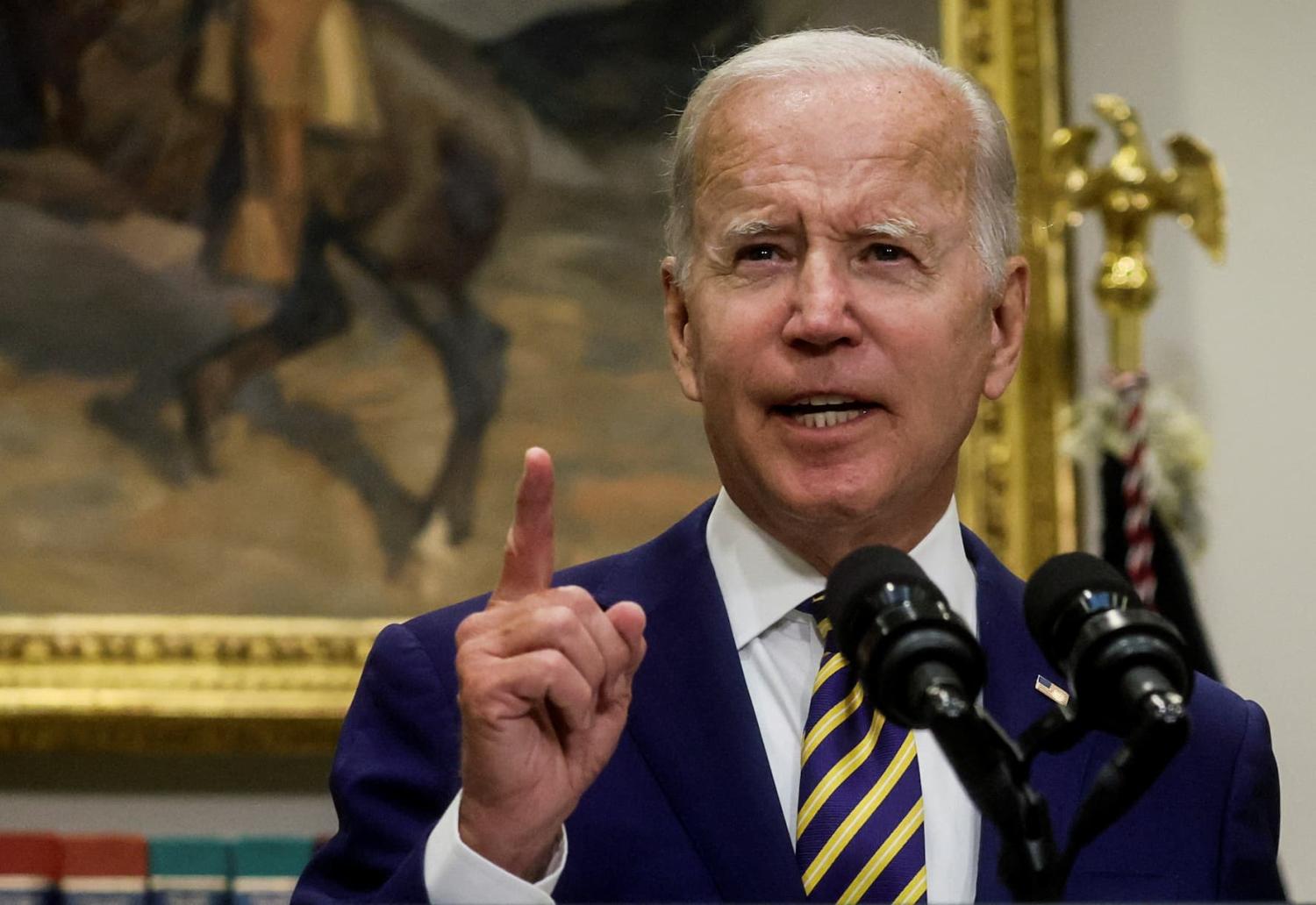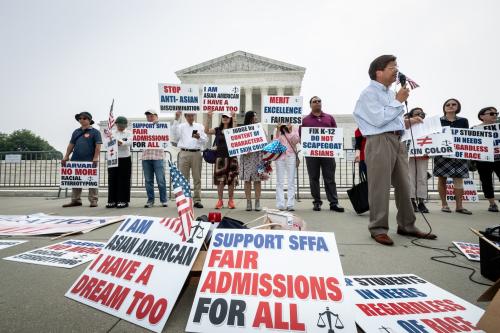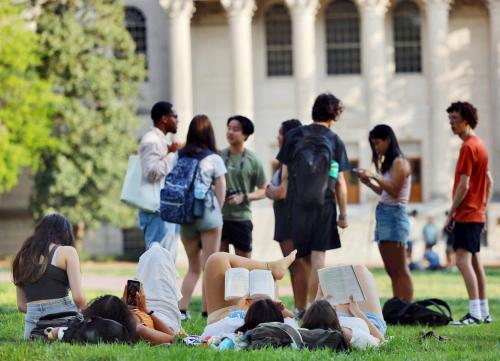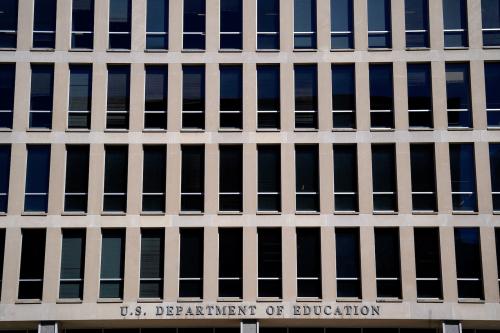The 2023 negotiated rulemaking student loan debt relief committee concluded their meetings last week, deliberating on what efforts the Department of Education (ED) should propose to waive student loan debt. The “neg-reg” committee is a required phase in the Biden administration’s latest attempt to enact widespread student loan forgiveness, and the committee considered multiple possible borrower and loan criteria as proposed rules modifying the Higher Education Act (HEA). ED is now obligated to propose all items that reached consensus as a rule and may propose additional rules. What do we know about the proposals the committee considered and reached consensus on and the potential impact of enacting forgiveness?
Relief for whom?
For the final neg-reg session, ED proposed rules focused on student loan debt forgiveness for five general types of borrowers:
- Borrowers whose balances are greater than they were when entering repayment
- Borrowers who have been in repayment for an extended period
- Borrowers who might be eligible for forgiveness but aren’t on a forgiveness plan
- Borrowers who attended “low-quality” programs
- Borrowers in the Federal Family Education Loan (FFEL) program
The committee found consensus on some of these proposals, which ED will propose using the exact language approved by the committee. Other ideas may still be proposed but reworked from the version the committee reviewed based on their feedback. In particular, the committee pushed ED to develop and propose rules that targeted individuals experiencing “hardship.”
Where the neg-reg committee agreed
The first substantive consensus reached by the committee was for a rule letting the Secretary forgive loans if individuals are eligible for forgiveness through an income-driven repayment (IDR) plan, but the borrower is not enrolled in that plan. In this proposal, the committee recognized that existing student loan forgiveness plans are complex and difficult to navigate and that borrowers typically just enroll in the default Standard repayment plan offered when they exit their programs. About 40% of college students don’t even know IDR is an option and one study found half of borrowers who defaulted in the 2011 college cohort would have been eligible for a $0 monthly IDR payment if they had applied. Exactly how the Secretary could determine who is eligible is an open question, but these proposals were the least contentious ones proposed and reached consensus easily.
Two rules reached consensus that broadly determine relief based on the quality of program the student borrowed for. Both would waive the full outstanding balance for eligible borrowers. One consensus rule would issue debt relief if a borrower holds loans for an institution or program that has had its Title IV aid eligibility terminated because it failed to meet accountability standards or because it failed to deliver sufficient value including when the institution willfully misled students. Another would provide relief for loans borrowed for a program that closed after failing the new “gainful employment” metrics.
ED has already leveraged its authority to waive around $22.5 billion in debt for students whose schools closed or who were misled by their schools, though more expansive borrower defense and closed school regulations the Department implemented are currently being challenged in federal courts.
Forgiveness approaches still up for debate
Forgiving the interest on loans
The broadest plan the Department put forward, which did not receive consensus, would involve a one-time waiver of the interest outstanding on loans. Eligibility would be limited to individuals whose current balances exceed their original balance (e.g., in “negative amortization”). The possible amounts of forgiveness would be limited to how much more borrowers owe relative to when they exited their “grace period” (about six months following exiting their program with slightly different rules for older loans) and capped at a set amount depending on individual income and repayment characteristics ($10,000 or $20,000).
The committee’s pushback on these drafts was that they did not go far enough, with committee members pushing for larger forgiveness than the caps proposed. It is highly likely that the Department will keep the focus on forgiving interest in any subsequent rules they propose, though the specific criteria and limits may vary from those shared with the neg-reg committee. It is also an open question what the disbursement cut-off date would be for this policy – it could be any loans disbursed prior to July 2025, the earliest date the proposed rules could go into effect, or a date earlier than that.
Who owes more on their loans than they originally borrowed? First, since loans continue to accrue interest during grace periods and, for unsubsidized and PLUS loans, while a student is enrolled in school, most students exit their grace period already owing more than their original balances (though recent graduates who benefited from the pandemic-era pause on interest collection were less likely to graduate in a state of negative amortization). In Figure 1 below, I graph ED’s estimates of how many borrowers have a principal balance greater than the amount they originally borrowed within 12 years of starting their undergraduate program. This point-in-time snapshot shows that 27% of borrowers owed more than their original amount borrowed, with significantly higher rates for Black borrowers (this mirrors prior analyses), students who earned a Pell grant while in school, and students who either did not complete their degree or completed a subbaccalaureate degree within six years of college entry.
Importantly, these proposals will not completely waive any borrower’s outstanding debt, since the proposal is limited to the interest accrued on a loan. In contrast, the Biden administration’s initial proposed effort to forgive student loans in August 2022 would have completely eliminated loan balances for at least 29% of borrowers. Thus, the current proposal is much more limited in scope in comparison.
Consequently, the current proposals might disproportionally benefit more recent borrowers (who are less likely to have made a dent on their principal yet). A substantial share of graduate school borrowers would be eligible as they typically defer payments on their undergraduate loans during graduate school but still accrue interest during that time. Individuals enrolled in an income-driven repayment (IDR) plan are also more likely to be in negative amortization since their lower monthly payments may not cover monthly interest (especially for borrowers with a $0 monthly payment). This feature of IDR is being proactively adjusted under the new SAVE plan which does not add interest to balances when the structured monthly payment doesn’t cover monthly interest. Additional reforms that remove interest accrual and capitalization while students are enrolled in school could further limit the instances of negative amortization for future borrowers.
Borrowers who have been in repayment for an extended period
The Department also proposed a one-time forgiveness for individuals with older debt. In theory, individuals paying down debt on the Standard repayment plan would pay off their debt within 10 years. For those who struggle with the higher Standard monthly repayment, ED has income-driven and public service loan forgiveness plans in place that automatically cancel debt after a set number of (typically lower) monthly payments. Yet there are still many borrowers not enrolled in those programs who have held their debt for 20 to 25 years or longer. This proposal would have automatically forgiven the balance remaining on loans disbursed before 2000 (for borrowers’ own undergraduate education) or 2005 (for other direct loans, including graduate and parent PLUS loans). The committee supported the rationale of waiving older loans but wanted the department to enact rules that would authorize ongoing forgiveness once loans reached and extended repayment period, as opposed to a one-time waiver for these older debts. The Department argued that ongoing time-based relief was unnecessary since the new SAVE plan will forgive loans earlier than existing forgiveness programs, though committee members were skeptical about widespread take-up of the program.
Borrowers in the Federal Family Education Loan (FFEL) program
Finally, the committee reviewed forgiveness policies for the Federal Family Education Loan (FFEL) program. This program, which ended in 2010, involved private loans that were guaranteed by the federal government (despite the name, these aren’t targeted at “families” per se, and the FFEL portfolio includes both individual subsidized and unsubsidized loans as well as PLUS loans). Since the government does not outright own the loans, the unique structure of these loans necessitates specialized regulatory action. For example, these loans are not eligible for income-driven repayment plans unless borrowers consolidate into a direct loan – which typically results in interest capitalization that causes higher subsequent interest charges. The loans were also not eligible for the pandemic-era payment pause, and would have been excluded from the Biden administration’s earlier attempt at widespread forgiveness.
Here the committee found partial consensus – the FFEL servicer representative withheld consensus on the framing language of forgiving FFEL loans, recommending additional edits to clarify the forgiveness process, but the committee reached consensus on the Secretary forgiving FFEL loans when the borrower would be eligible for a closed school discharge but hadn’t applied and if the institution they borrowed for failed the cohort default rate (and they were in the cohorts with a failing default rate). The committee did not reach consensus on forgiving older FFEL loans, citing the same concerns about an eligibility cliff and one-time relief.
What’s next?
ED intends to issue a notice of proposed rulemaking (NPRM) in May 2024 using the verbatim regulatory language the committee reached consensus on and may include modifications of proposals the committee did not find consensus on. The public then has 30 to 60 days to comment on proposed rules, and those comments play a crucial role in how ED will finalize regulatory language. Federal regulations are also frequently subject to legal challenge, and comments are one source of evidence considered when evaluating whether a proposed regulation is constitutional, within the agency’s legal authority, was made via the appropriate rulemaking process, and is not “arbitrary, capricious, or an abuse of discretion.”
Outside the courts, rules are subject to the Congressional Review Act, and a joint resolution of disapproval of a rule can result in it being blocked or revoked. A CRA motion on any rules proposed around student loan debt relief is all but certain. In early 2023, Congress passed a CRA disapproving the Biden administration’s initial attempt at widespread loan forgiveness (President Biden vetoed the bill, and a few weeks later the Supreme Court ruled the policy unconstitutional), and in late 2023, the House and Senate both introduced measures to disapprove the new “SAVE” income-drive repayment plan (the Senate rejected their CRA measure in November 2023, and while the House passed their CRA in December 2023, President Biden indicated he would veto any CRA on SAVE that reached his desk).
Finally, a change in administration can stall the implementation of rules (and a Republican president would certainly sign a CRA that reached their desk), and a new administration could formally rescind rules through their own rulemaking process, such as when the Trump administration rescinded the Obama administration’s initial gainful employment rules.
Following the rulemaking calendar, the earliest individuals might receive student loan debt relief would be July 2025, as long as ED submits the final rules prior to November 1, 2024. However, legal challenges, Congressional review, and potential executive action make it far from certain that the rules the neg-reg committee found consensus on this week will ultimately go into effect.
The Brookings Institution is committed to quality, independence, and impact.
We are supported by a diverse array of funders. In line with our values and policies, each Brookings publication represents the sole views of its author(s).








